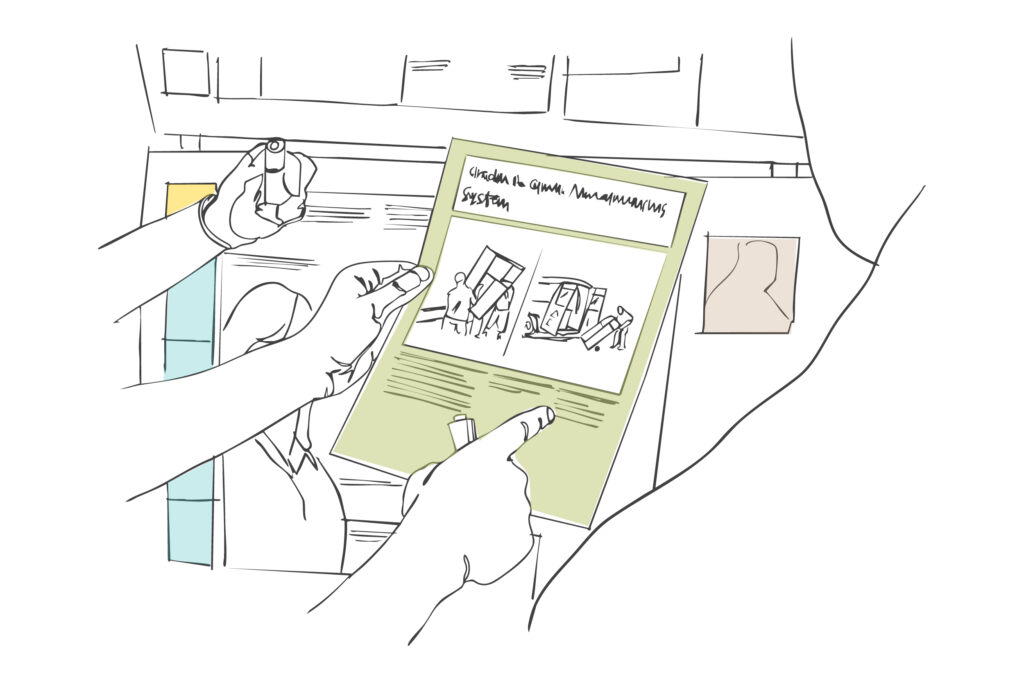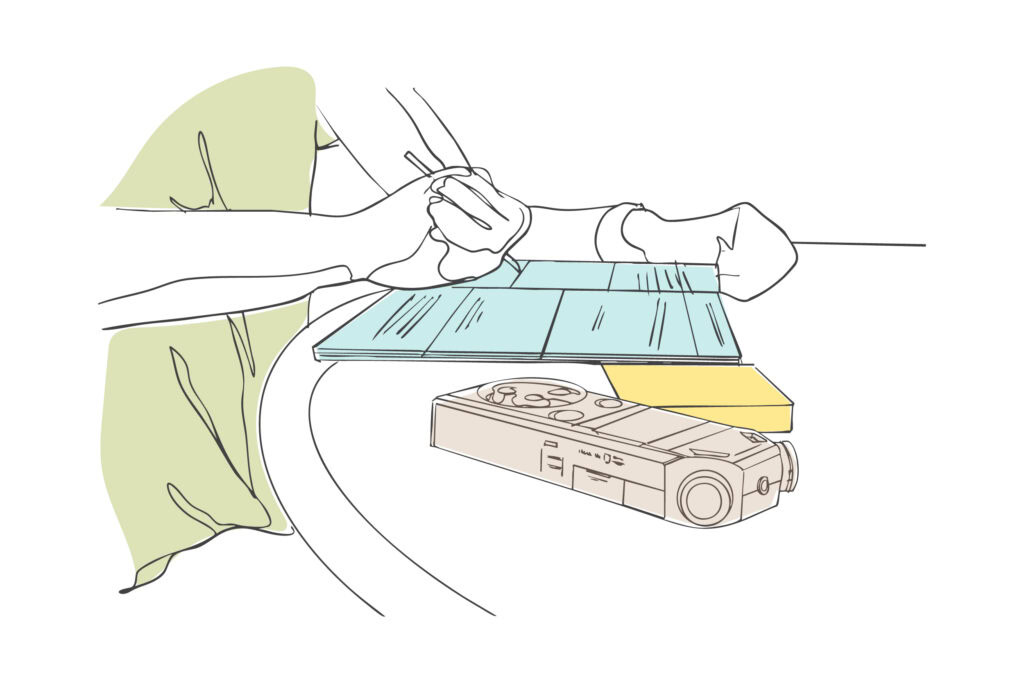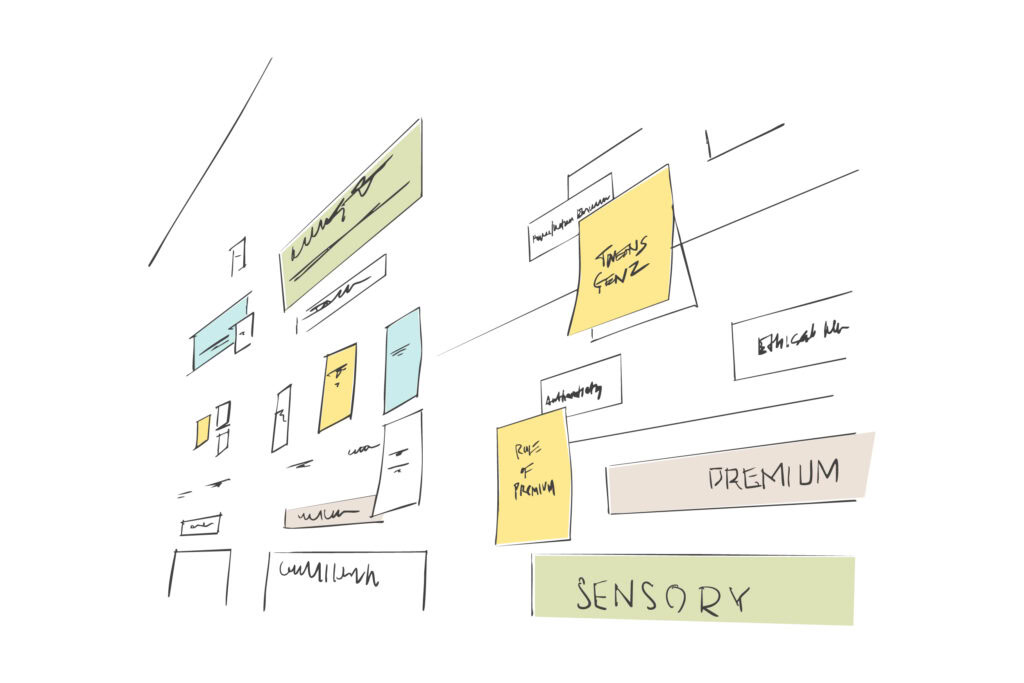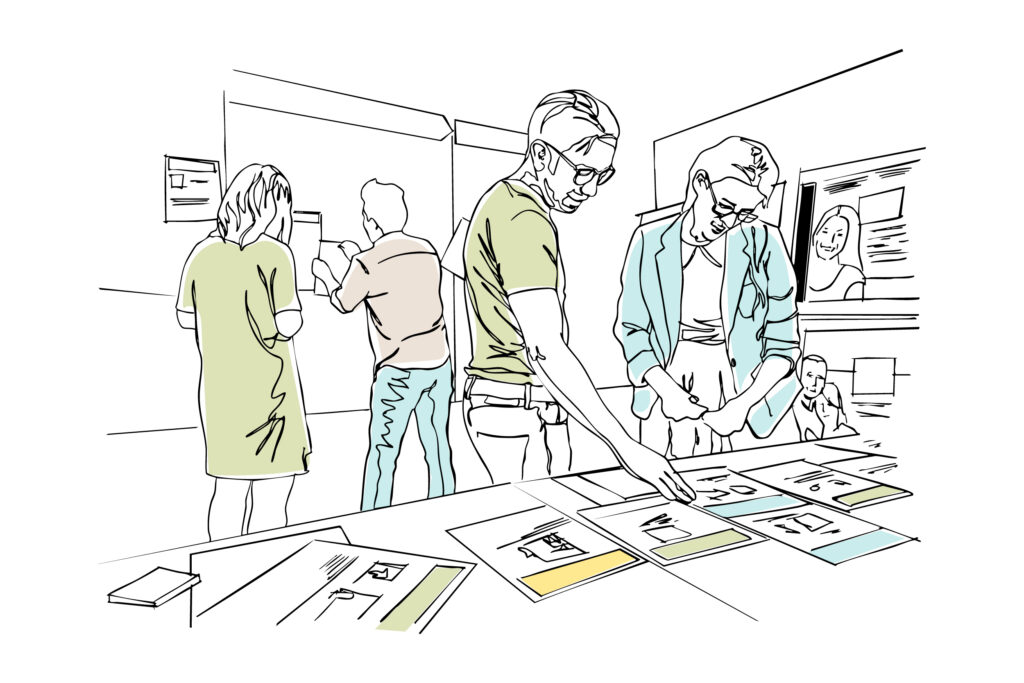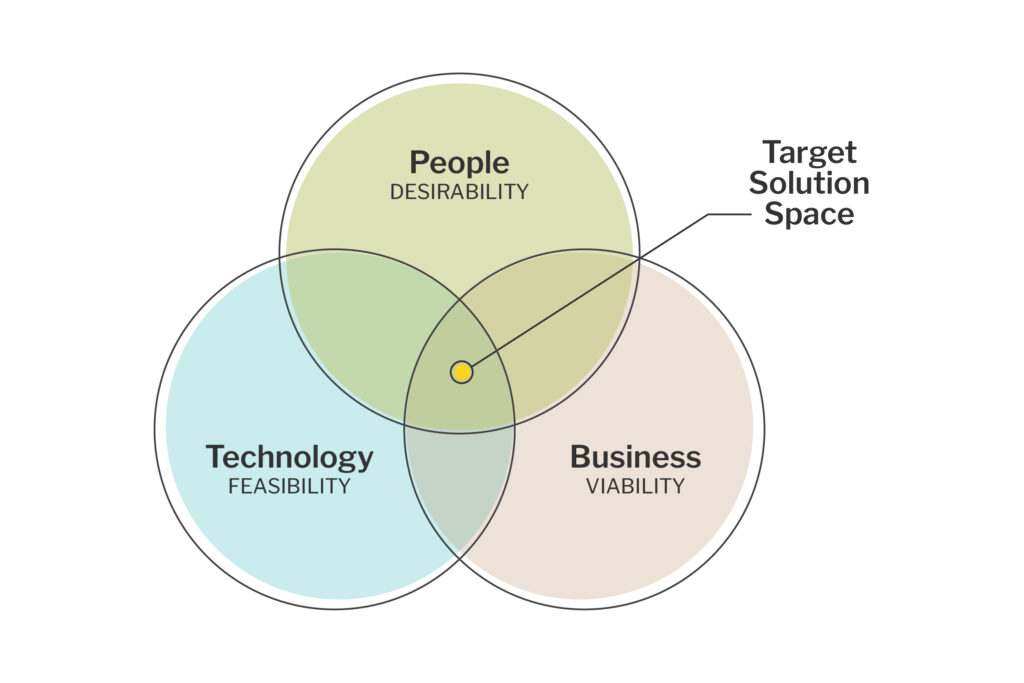An opportunity framework is a powerful strategic planning tool that looks broadly across markets to help businesses define their potential opportunities and prioritize their business growth trajectory. There is no one way to grow a business, but it’s crucial for companies looking for long-term success to build a strategic pipeline of future growth opportunities. Here, we dig into the benefits and outline 5 steps for creating your own opportunity frameworks, so you can make sure your business is primed for success today and in the future.
How do you find future growth opportunities? Similiarly, once you’ve got them, how do you organize them in an actionable way with clear metrics? In our previous article on market mapping, we shared one way to mine opportunities by looking at your market and business context in a structured way. Here, we will look at what you can do with opportunities once you’ve identified them by creating an opportunity framework.
What is an Opportunity Framework?
At a fundamental level, an opportunity framework offers a way to cluster all the opportunities that exist within your market to create a visual presentation that lets you see them laid out on paper all at once. This accessibility enables stakeholders in your company to understand the future growth opportunities that exist and to be able to make informed decisions about where to prioritize resources. Since resources are finite, you’ll always face constraints in any business environment. Therefore, you need to understand how to operate under those constraints and make the most effective use of the resources you have to invest in the areas that will deliver the most impact and are a good market fit.
While it may look simple, an opportunity framework is a powerful thinking tool that looks broadly across markets to help your business understand its potential growth trajectory.
Why do you Need an Opportunity Framework?
Maybe you’re not struggling with deciding what your business should do next. Perhaps you’re asking, why should we invest our finite resources in creating this? Why can’t we choose to go after ‘X’ market opportunity that we think will make our business money?
While that one thing might end up being an effective way to reach into new pockets of growth, usually by focusing only on just one thing or the first thing that comes to mind, you run the risk of going too narrow and missing out. (All the eggs, one basket.) Although, suppose you pull back and look at the entire landscape of future growth opportunities, even if you do decide to make that first, instinctual move. You’ll be aware of the trade-offs you are making and feel confident that your decision is strategically sound.
Step 1: Create an Opportunity Framework by Defining your Opportunities
To create an opportunity framework, you first have to define what your future growth opportunities look like.
Note that an opportunity isn’t just let’s make more money or let’s make our consumers happier; those are results of pursuing opportunities. Opportunities can be:
– Gaps in the market that your competitors aren’t filling yet
– Un-met or under-served needs your consumers or customers may have
– Unresolved pain points that your audience experiences
– Delighters that you can amplify to make your offering stand out amongst a crowded marketplace
– First-time technological advances to your products, services, or packaging
– Shifts in business models, pricing, or services you might monetize but haven’t yet
– Changes to the regulatory landscape or economic circumstances of your target
– Additional capabilities or processes your company may develop but hasn’t yet
Discovering what future growth opportunities might be out there for you often starts with research. Either with your stakeholders (primary research) or by looking at published data sources from inside or outside your organization (secondary research). These are all valuable resources to discover your new growth opportunities, and you should look at a good mix of them to make sure you’re not leaving anything out. You also want to look from both a business perspective and a customer perspective. Then, look more broadly into trends and the other industries around you that may yield other potential opportunities. You may not directly compete, but might have adjacent or complementary offerings to the products you currently make today. (See more on adjacent offerings and trends in our article on market mapping.)
To help guide your research, think about looking for opportunities that are going to answer the critical questions, such as:
– How might you serve your best customers better?
– How can you reach a portion of the audience whom you do not yet serve?
– How can you expand into adjacent markets or offer complementary goods to help people more fully utilize or enjoy the offerings you make today?
– How might you enter new markets altogether?
All of these can be potential future growth opportunities. It’s certainly not an exhaustive list; I bet you can imagine a couple more just based on these examples.
Step 2: Crafting an Opportunity Statement is Key in an Opportunity Framework
Once you’ve identified your opportunities, next, you want to craft a short statement about each one. At THRIVE, we like to start these statements with “How might we” because it helps us to understand the breadth of possibilities and frame them in a positive light that points us toward action. For example, an opportunity statement could be: How might we offer products that solve “X” pain points? Or, How might we delight our customers better at a particular touchpoint?
You want to craft as many unique opportunity statements as you can. As you’re doing this work, you’ll find the right “level” of opportunity statement for your business. Some people like to get pretty granular, especially those with a very nuanced consumer interaction. Opportunity statements can be as specific as: How might we shave 10 seconds off the experience to serve rushed consumers better? They can also be as broad as: How might we better serve consumers in X, Y, or Z occasion? You can make a strategic choice about how granular you want to get.
Step 3: Affinitize your Opportunity Statements to Form a Successful Opportunity Framework
The next step is to affinitize the opportunity statements — this is a fancy way of saying group or gather similar ideas, thoughts, and events together. This will aid in the organization and digestibility of your identified future growth opportunities. It’s also a chance to go back and levelize the opportunity statements to ensure things are sitting at the same granularity level, as mentioned in the previous step. If you’re going for a very granular opportunity framework at this point, you may want to break down some of the more significant opportunities until they feel like they’re more tangible and actionable. If you’re going for a broader framework, you can cluster or lump the granular future growth opportunities together as you’re doing this exercise.
As you affinitize, we find it helpful to create 3 tiers of groupings:
1. Specific opportunities
2. Opportunity areas
3. Business segments or consumer occasions
Looking at this process from the bottom-up perspective, you would group together related “how might we” statements (the specific opportunities), then give them a name to create an opportunity area. Clusters of opportunity areas usually point to or can be organized by a consumer need, pain point or occasion, or business segment. (Some people prefer to work the other way around and go from top to bottom, it’s up to you!)
Whichever way you want to go about grouping, be sure to create opportunity area names that will add meaning to your groups. Rather than just giving them arbitrary titles, you want to name them in a way that offers more information about the opportunities that sit underneath them. That way, when you go to build out the opportunity framework, you can parse through your clusters more quickly — especially when looking at quite a few of them. An example could be “Logistics” for the business segment, “Distribution” for the opportunity area, and a specific opportunity statement within there could be: How might we make sure our products are physically available when our consumers are shopping for them?
Step 4: Organize and Map for an Effective Opportunity Framework
Now that you have affinitized your opportunities, it’s time to start the mapping process. You can structure your framework in several different ways. At THRIVE, we prefer using a grid. A grid is the simplest way we’ve found to create a practical visual landscape that is actionable, sticky, and straightforward. Remember, the framework aims to let you see all of your opportunities for future growth at once in a useable ecosystem of options.
The map uses two dimensions to capture new future growth opportunities: relevance versus difference. You need to consider both to determine where to put your time and energy for any new product development and innovation efforts. A given opportunity’s relevance is considered across three states of need, from the conscious to the unconscious: differentiators, drivers, and antes. Then, they are mapped against differentiation on a relative scale.
Differentiators: Features and benefits consumers did not realize they needed and are totally unique from the competition. This is where the unmet and unarticulated needs reside to create new sources of value through new-to-world, first-time innovation opportunities.
Drivers: Features and benefits that are both critical to consumers and highly distinct from the competition. This is where unmet, but articulated needs, are uncovered with the potential to drive incremental innovation.
Antes: Features and benefits that are important to your audience but are already provided by ALL competitors at a similar level. This is where you will find needs that are both met and articulated.
This is an example of how a leading brand mapped the kitchen cabinet market for new growth opportunities.
Step 5: Create an Opportunity Framework by Prioritizing
Okay, so now you might be getting excited as your opportunity framework begins to take shape. Specifically, it might get some people jazzed about the different places you could go — but you’re not done quite yet! The thing is, some of these opportunities might not make sense to pursue now, and some of them might not make sense to pursue ever. The opportunities could be, for whatever reason, not profitable, don’t align with your brand, be beyond your core competencies, are not a market fit, or could be better served by a competitor. Thus, they’re not worth the investment to pursue. By investment, we don’t just mean monetary; consider investment in human capital and mental capital as well.
Now, you need to gather all your stakeholders together to discuss and unpack these career opportunities and engage them in a prioritization activity to select the future growth opportunities your business can effectively address. This can be orchestrated in different ways. At THRIVE, one way we’ve approached prioritization is with a ranking scorecard. We use the lenses of human-centered design: desirability, viability, and feasibility to determine which opportunities to pursue. The same lenses and questions drive a different answer for different organizations based on their brands, technical capabilities, and technology portfolios. Stakeholders can use a product opportunity evaluation matrix before a collaboration session to organize their thoughts and ideas about why each opportunity is worth considering or discarding.
Once you have your priorities and some stakeholders sitting around the table nodding their heads, you can take this a step further. Map them out against time horizons to aid in actionability. Simply put, what will you address now versus next? You can take that one level further and start to put some time horizons in terms of years.
Year 1: Identify if particular opportunities are achievable.
Year 2: What cluster of options might be within reach with some focused effort and the right resources in place?
Years 3-5: You might think about possibly some new technologies or headcount requirements that need to be in place.Perhaps, you can realize the benefits of an even more comprehensive set of opportunities.
Opportunity Assessment Framework
When you look at the landscape of opportunities you’ve uncovered for your business, it’s essential to not just think about today. Do some strategic planning and think about how you can build a strategic approach for the future. Engaging in only short-term growth isn’t ultimately sustainable for the long-term health of any business or startup. Still, if you use your opportunity framework to begin thinking about creating a long-term plan for the future, you can make sure that the business stays healthy for years and years to come.
Are you are looking to define and understand your next potential growth business opportunity? We can help. Contact THRIVE today, and let’s talk. Collaboration begins with a conversation. Get started on your powerful opportunity framework now, with us.
(Article updated on 10/30/2024)



